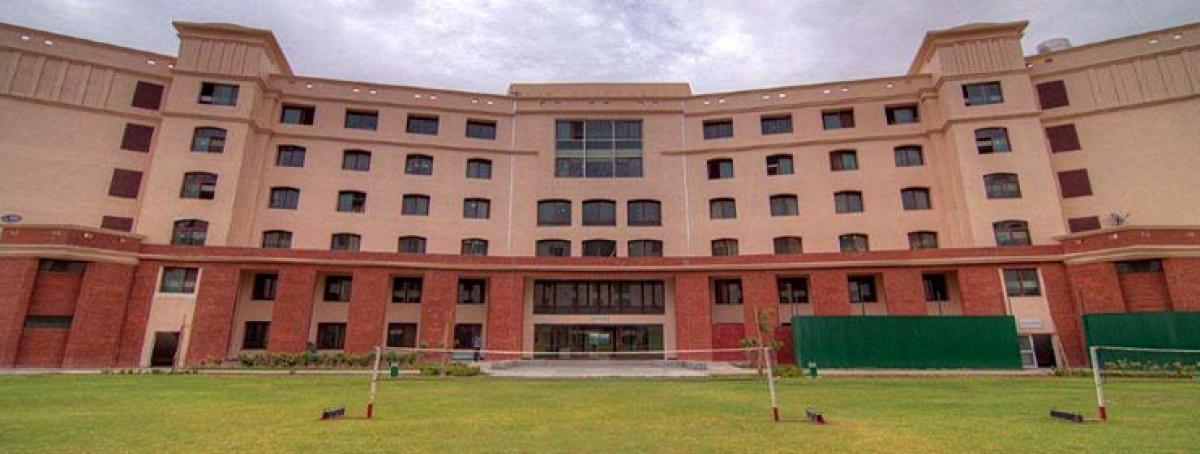Live
- No ‘blame game’ over pollution issue: Mann
- 3 Odisha Police officers get ‘Dakshata’ award
- Punjab To Rebrand Aam Aadmi Clinics Following Central Funding Dispute
- First inscribed ‘Sati Shila’ of Odisha deciphered
- India-China Defence Ministers To Meet Following Historic LAC Disengagement Deal
- NBW against ex-BJD MP, 5 others in tribal murder case
- Combing operations on against Maoists, weapons recovered: HM
- Delhi's winter action plan: Govt to set up 250 tents for homeless individuals
- Naik reviews drinking water project
- Eureka! 2 young innovators unleash creativity, dish out AI-enabled solutions
Just In
South Asian air quality threatened by Punjab's crop residue

5 Nov 2015 9:23 PM IST

x
Highlights
Describing Punjab as a \"burning\" food basket, two renowned earth scientists warn that the outflow of air pollution arising from burning crop residues is not only a threat to South Asian air quality but also \"can modify atmospheric chemistry and climate dynamics globally.\"
Bengaluru: Describing Punjab as a "burning" food basket, two renowned earth scientists warn that the outflow of air pollution arising from burning crop residues is not only a threat to South Asian air quality but also "can modify atmospheric chemistry and climate dynamics globally."
 "Thick smoke aerosol plumes from the burning may significantly affect atmospheric circulation, monsoon and El Nino-Southern Oscillation systems, precipitation patterns, glaciology and atmospheric heating over the Tibetan Plateau," says a report by Ramesh Singh of the School of Earth and Environmental Sciences of Chapman University in California and Dimitris Kaskaoutis of the School of Natural Sciences of Shiv Nadar University at Dadri in India.
"Thick smoke aerosol plumes from the burning may significantly affect atmospheric circulation, monsoon and El Nino-Southern Oscillation systems, precipitation patterns, glaciology and atmospheric heating over the Tibetan Plateau," says a report by Ramesh Singh of the School of Earth and Environmental Sciences of Chapman University in California and Dimitris Kaskaoutis of the School of Natural Sciences of Shiv Nadar University at Dadri in India.
 "Thick smoke aerosol plumes from the burning may significantly affect atmospheric circulation, monsoon and El Nino-Southern Oscillation systems, precipitation patterns, glaciology and atmospheric heating over the Tibetan Plateau," says a report by Ramesh Singh of the School of Earth and Environmental Sciences of Chapman University in California and Dimitris Kaskaoutis of the School of Natural Sciences of Shiv Nadar University at Dadri in India.
"Thick smoke aerosol plumes from the burning may significantly affect atmospheric circulation, monsoon and El Nino-Southern Oscillation systems, precipitation patterns, glaciology and atmospheric heating over the Tibetan Plateau," says a report by Ramesh Singh of the School of Earth and Environmental Sciences of Chapman University in California and Dimitris Kaskaoutis of the School of Natural Sciences of Shiv Nadar University at Dadri in India."This creates a climatic imbalance likely centered over Punjab," Ramesh Singh, who was earlier a professor at the Indian Institute of Technology-Kanpur, told IANS.
Traditionally farmers of Punjab manually harvested and ploughed the fields. The left over crop residues mixed with soil provided nutrients for the next crop a month later. Mechanized harvesting, adopted since the late 1980s - to save time and increase the farmers' profits - changed all that. Now machines cut the harvest and the stalks are burned to quickly ready the fields for the next planting, Ramesh Singh said. For more than two decades, farmers in Punjab, a region spanning northwestern India and eastern Pakistan, have continued the practice of burning the crop residues.
"Each year, during October and November, this extensive agricultural burning lasts for more than three weeks," Ramesh Singh said, adding that weather patterns, which are typical of the post-monsoon months, "funnel the smoke to the Indo-Gangetic Plain".
"Health risks stem from the smoke mixing with industrial pollutants such as diesel fumes, power plant emissions and soot to form air highly concentrated with particulate matter breathed by close to 900 million people - one eighth of the world's population," the scientists said, adding that residue burning has increased sharply over the past decade.
According to the report, the only solution for this problem is to go back to manual harvesting. They admit the remedy may be unpopular since manual harvesting consumes more time and cuts down grain production from a given plot.
"Without this step, crop residue burning in Punjab will continue its unchecked influence on weather, climate, and health" of the people in the Indo-Gangetic Plain," the scientists conclude.
By K.S. Jayaraman
(The author can be contacted at [email protected])

Next Story
More Stories
ADVERTISEMENT
© 2024 Hyderabad Media House Limited/The Hans India. All rights reserved. Powered by hocalwire.com






